Here are the different types of flowers with names that begin with the letter B, with an emphasis on common and easy-to-grow varieties.
Baby Blue Eyes (Nemophila menziesii)
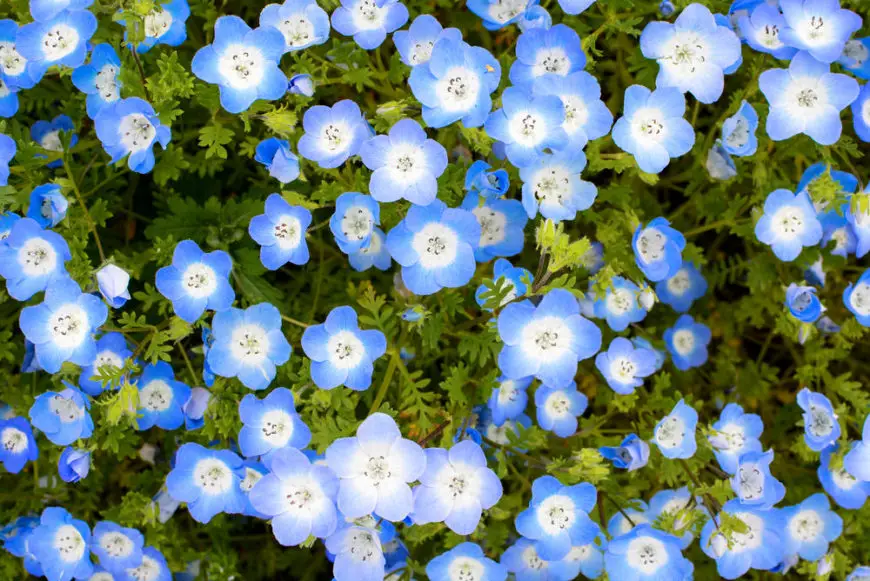
Baby Blue Eyes are delicate, low-growing annual wildflowers that bloom with a profusion of bright sky-blue flowers in spring and early summer. Native to western North America, they get their common name from their small, upward-facing blue blossoms.
Growing just 4-12 inches tall, Baby Blue Eyes produce masses of 5-petaled flowers accented by white centers. The blooms open in sunshine and close at night or on cloudy days.
Perfect for rock gardens, containers or underplantings, Baby Blue Eyes thrive in partial shade to full sun and moist, well-drained soil. They self-sow readily if not deadheaded.
While short-lived, Baby Blue Eyes bloom over an extended spring period, providing early splashes of color. Their low, spreading habit and ferny foliage make them useful as spring groundcovers.
Very low-maintenance once established, Baby Blue Eyes attract bees and butterflies with their nectar-rich flowers. For best reseeding, allow spent plants to set seed before removing.
Though delicate in appearance, Baby Blue Eyes are tough and drought-tolerant once mature and their fleeting but profuse blooms are a welcome sign of spring in many regions.
Baby’s Breath (Gypsophila paniculata)

Baby’s Breath is a herbaceous annual flowering plant that belongs to the Caryophyllaceae (Pink) family. Native to central and eastern Europe, it has been naturalized across most of the United States and parts of Canada.
While petite individually, Baby’s Breath blooms make excellent fillers for bouquets and dried floral arrangements because they have a long vase-life and the flowers retain their shape well when dried.
Although usually available in white or pink, Baby’s Breath can be dyed in different colors to resemble other popular types of flowers such as the carnation. These flowers are often used in weddings, proms, memorial services, and general decoration.
Baby’s Breath grows on wiry, branched stems that can reach up to 3 feet tall when mature. The tiny white flowers have five petals each and bloom in abundant, cloudlike clusters. Baby’s Breath gets its common name from the light, airy appearance of the flower masses.
Baby’s Breath prefers full sun exposure (6-8 hours per day) and can tolerate a wide range of soil types, including poor or dry soil, as long as drainage is good. Once established, the plants show high drought tolerance.
Sow seeds directly outdoors in early spring after the danger of frost has passed. Baby’s Breath self-seeds readily if allowed and regular deadheading promotes continued blooming through the summer months.
Bachelor’s Button (Centaurea cyanus)
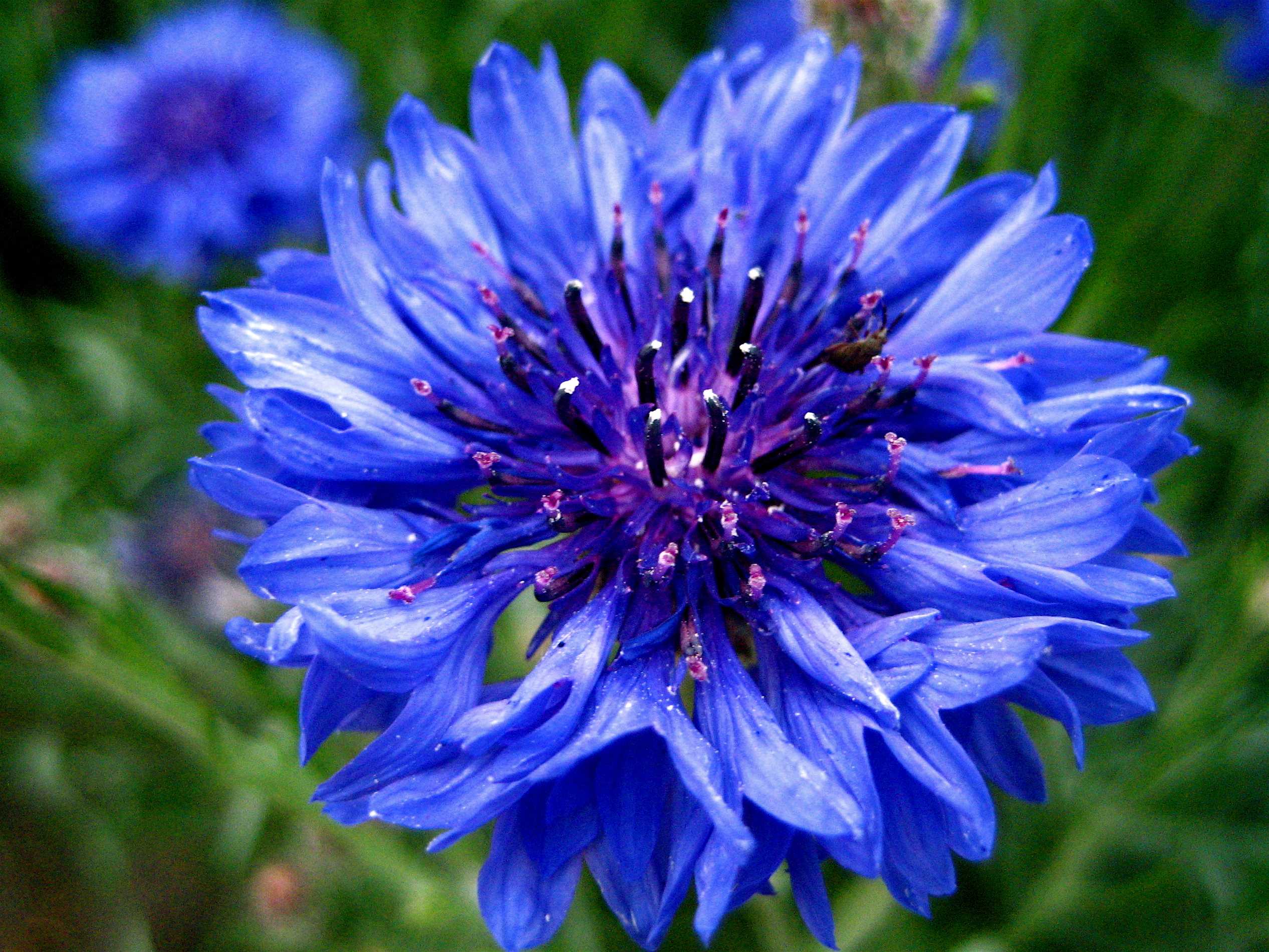
Bachelor’s Button, also known as Cornflower, is a hardy annual flowering plant belonging to the Asteraceae (Daisy) family that makes an excellent, easy-to-grow choice for borders, cottage gardens, and meadow plantings. Although native to Europe, it can be found across most of North America.
Bachelor’s Button grows to be 1-3 feet tall with slender, branched stems. The distinctive flowers have raggedy petals surrounding a dense cluster of small tubular florets. Bachelor’s Buttons most commonly appear in shades of blue, pink, purple, or white.
An old favorite for cutting gardens, Bachelor’s Buttons make excellent fresh or dried cut flowers with a long vase life. The flowers are also a great source of nectar for bees and butterflies.
Bachelor’s Buttons perform best in full sun and well-drained modestly fertile soil. They can tolerate poor soil conditions and some drought once established. Sow seeds directly outdoors 2-4 weeks before the last frost date in spring.
Bachelor’s Buttons self-seed if not deadheaded, allowing them to naturalize readily, but routine deadheading will promote more prolific blooming throughout summer.
Ball Cactus (Parodia Magnifica)
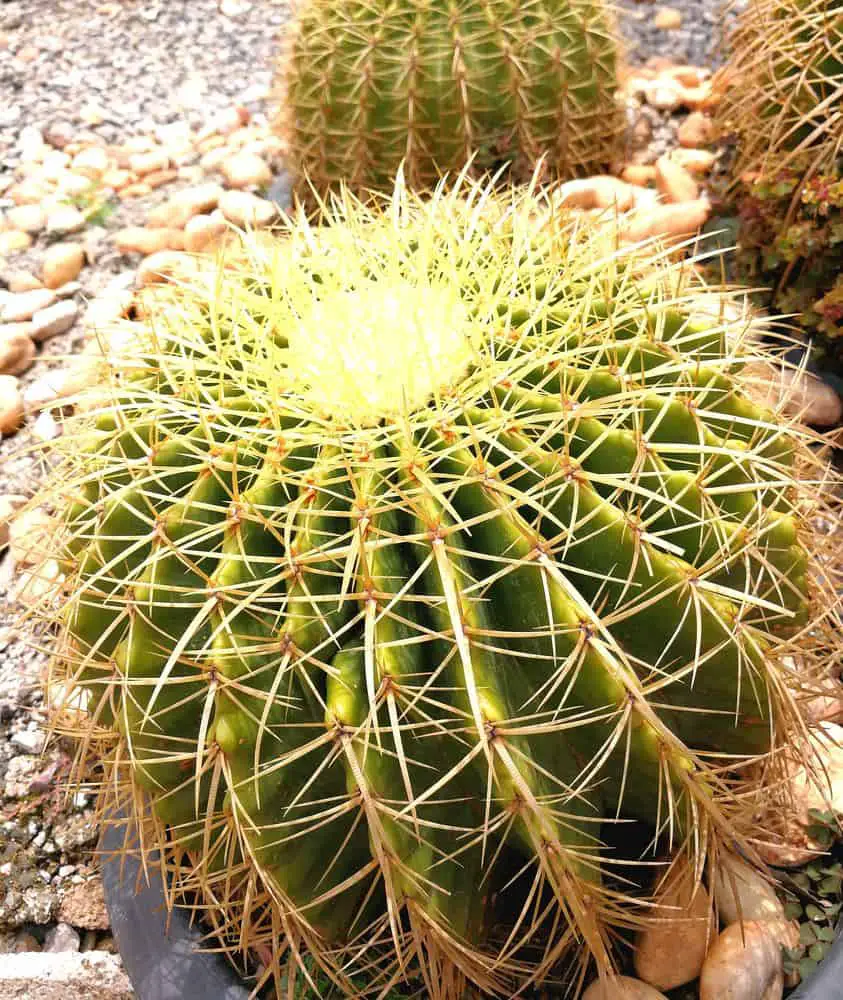
The Ball Cactus is a round, spherical cactus native to Brazil, Uruguay, and Argentina. It gets its common name from its perfectly globe-shaped body that can reach up to 12 inches in diameter when mature.
Indoors, Ball Cacti make great novelty houseplants that are easy to care for. Outdoors in warm climates, Ball Cacti can be grown in xeriscape or rock gardens with other cacti and succulents.
The Ball Cactus has thick, ribbed green stems covered in stiff spines or bristles allowing it to retain water in its native arid environments. Yellow, red, or pink cup-shaped flowers sprout from the tops in spring/summer.
As a desert cactus, Ball Cacti require full sun and very well-draining soil mixes designed for cacti and succulents. They are very drought tolerant but cannot tolerate excessive moisture which can cause rot.
Ball Cacti remain compact and solitary, not producing offsets like other cactus species. However, they can be propagated from seed relatively easily by cactus enthusiasts.
Handling the sharp spines with care is required; Ball Cacti have small barbs that can detach into skin so be sure to keep children and pets away! With their unique spherical shape, Ball Cacti are interesting additions to cactus collections.
Balloon Flower (Platycodon grandiflorus)
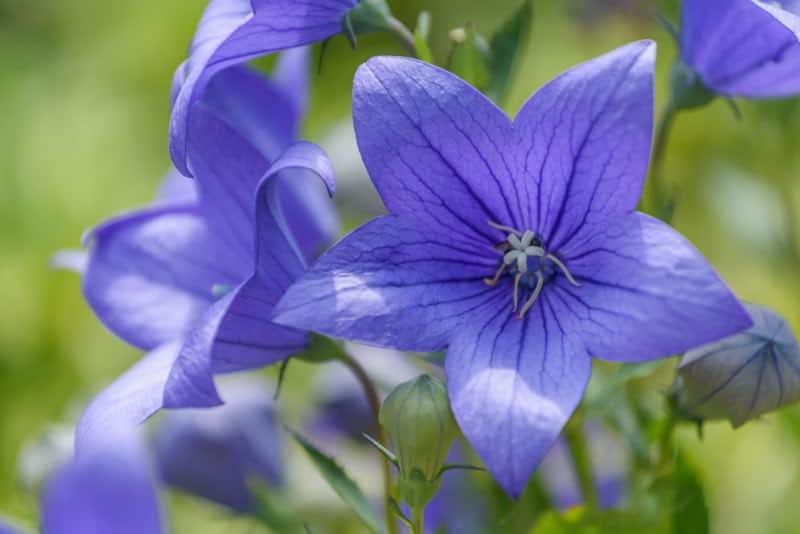
Balloon Flower, also known as Balloon Vine and Japanese Bellflower, is a perennial flowering plant that belongs to the Campanulaceae (Bellflower) family.
Native to East Asia including China, Korea, and Japan, it has been cultivated as an ornamental garden plant worldwide and cut Balloon Flowers also make for excellent flower arrangements because of their long vase life.
As the name suggests, the buds of this plant resemble small hot air balloons before blossoming into bell or star-shaped flowers in shades of blue, purple, pink, or white. The flowers grow on upright stems reaching 8-32 inches tall.
Balloon Flowers bloom over a long period from late spring through late summer and the seed heads attract songbirds later in the season.
Although typically used as a groundcover or a climbing vine for borders, cottage gardens, and rock gardens, Balloon Flower can also be grown as houseplants during winter if no frost occurs in your area. Balloon vines grow well in containers too!
Balloon Flowers prefer full sun to partial shade and well-drained, humus-rich soil. They are drought tolerant once established. Propagate by division in early spring or from seed started indoors 6-8 weeks before the last frost date.
Banana Shrub (Michelia figo)
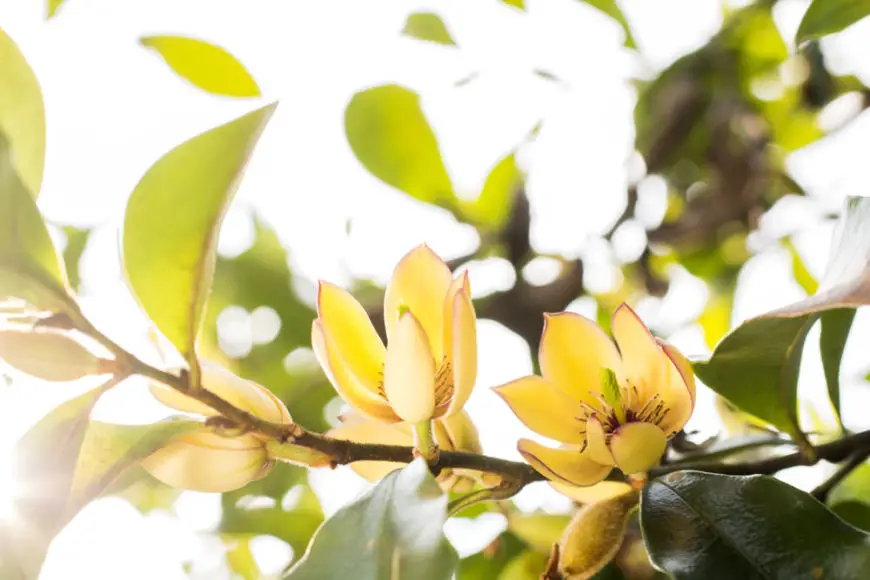
The Banana Shrub, also called the Banana Shrub Vine or Ports Magnolia, is an evergreen shrub or vine native to Southeast Asia. Its common name comes from its curved, banana-shaped seed pods and distinctively fruity fragrance.
Growing 6-15 feet tall, the Banana Shrub features large, glossy green leaves and sweetly fragrant creamy-yellow magnolia-like flowers that bloom intermittently throughout the year in warm climates.
Banana Shrubs prefer fertile, well-draining soil and partial to full shade, though they can tolerate full sun in humid areas. They make excellent landscaping plants for foundations, hedges, or trellises in warm regions.
Mature plants can produce eye-catching, curved seed pods after flowering that start green and ripen to a rosy-pink color. However, Banana Shrubs are primarily grown for their rich fragrance and evergreen foliage.
While drought-tolerant once established, consistent moisture is required for best growth and flowering. Cold hardy only to about 25°F, Banana Shrubs are typically grown as houseplants or greenhouse specimens in cooler climates.
Pruning encourages branching and controls the size of these moderately fast-growing ornamental plants.
Basket of Gold (Aurinia saxatilis)
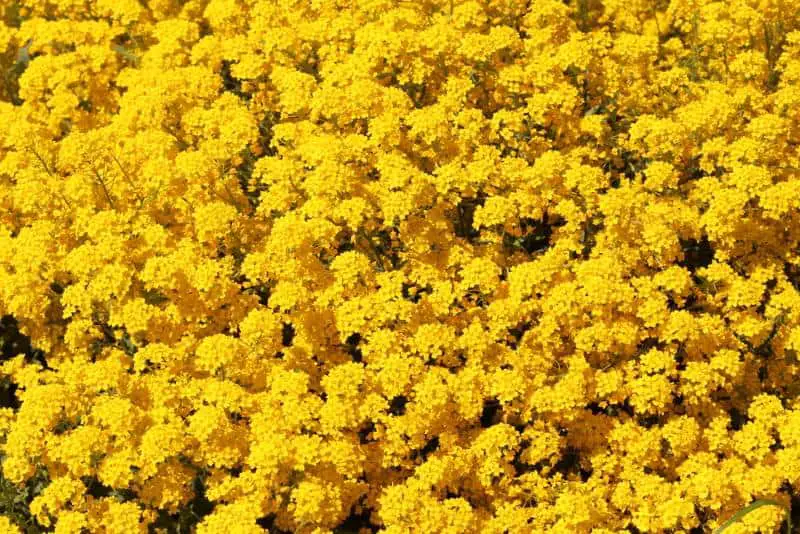
Basket of Gold, also called Alyssum or Rock Madwort, is a low-growing, spreading perennial that produces masses of tiny, golden-yellow flowers in early spring. Native to limestone areas of Europe, it gets its common name from the mounded, basket-like shape it forms when in bloom.
The bright yellow, four-petaled flowers of Basket of Gold completely cover the gray-green foliage in April and May, creating a warm, sunny blanket up to 12 inches high. The blooms give way to ornamental seed heads as they fade.
Basket of Gold thrives in full sun and well-drained, alkaline to neutral soils. It is drought-tolerant once established and requires little maintenance, making it ideal for sunny rock gardens or planted as edging along borders.
The low, trailing habit of Basket of Gold also allows it to spill over retaining walls or containers for a cascading effect. Its evergreen foliage provides year-round interest when not in flower.
Basket of Gold can spread indefinitely by self-sowing and rooting stems. Shearing back plants after blooming prevents overcrowding and rejuvenates growth. It is deer and rabbit-resistant, as well as attractive to butterflies and other pollinators.
Bay Laurel (Laurus nobilis)
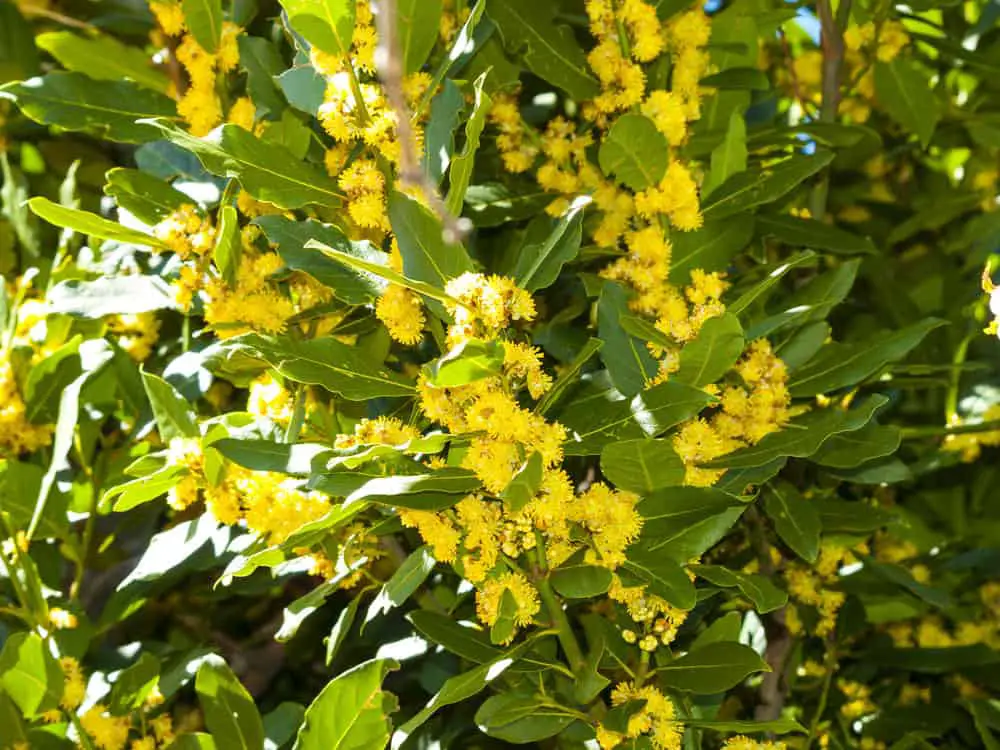
Bay Laurel is an aromatic evergreen tree or shrub originating in the Mediterranean region. Its name comes from the word “baccalaureate” and has a long history of use for ceremonial crowns and wreaths.
Grown for its fragrant, lance-shaped leaves, Bay Laurel can reach 12-40 feet tall outdoors, though it is often pruned shorter as a shrub or bay hedge. Small yellow flowers appear in spring, giving way to small black berries.
Bay leaves are an essential culinary herb used to flavor soups, stews, and other dishes. The leaves should be removed after cooking, as their texture is unpleasantly bitter and tough to consume.
Bay Laurel prefers full sun to partial shade and well-draining, fertile soil. It is drought-tolerant once established but looks its best with moderate watering. Cold hardiness varies, with some varieties only hardy to zone 8.
In addition to its culinary uses, the aromatic leaves have also been used historically for their supposed ability to repel insects and protect against lightning strikes when burned.
Bay Laurel can be grown in containers indoors in colder climates, though it may require winter dormancy. Regular pruning encourages a dense, compact form for this slow-growing evergreen.
Bear’s Breeches (Acanthus hungaricus)
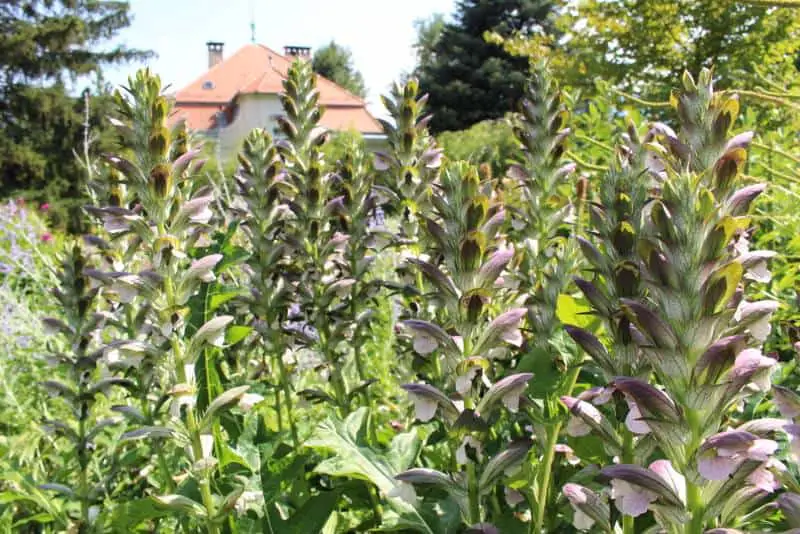
This clump-forming perennial gets its common name from the deeply lobed, spiny foliage that resembles bear’s paw prints when emerging in spring. Native to Hungary and surrounding areas, Bear’s Breeches is more cold-hardy than other Acanthus species.
When young, the architectural, ground-hugging leaves have a reddish tint that changes to a bluish-green color when mature, forming an attractive basal rosette up to 3 feet wide. Tall spires of hooded, two-lipped flowers arise in early to mid-summer, typically sporting pale purple with whitish bracts.
Acanthus hungaricus grows best in full sun to partial shade and moist, humus-rich, well-drained soil. It shows good drought tolerance once established but may need extra water during hot, dry periods. The plants go semi-dormant in winter.
Virtually disease and pest-free, Bear’s Breeches is extremely deer-resistant due to the spiny leaves and stems. It spreads gradually by shallow rhizomes and self-seeding, though not aggressively. Removing spent flower stalks prevents excessive seeding.
While too coarse for formal gardens, the bold foliage creates excellent textural contrast along borders or in cottage gardens. The upright flower spikes provide vertical interest and attract bees. Established plants can reach 3-4 feet tall.
Bee Balm (Monarda)
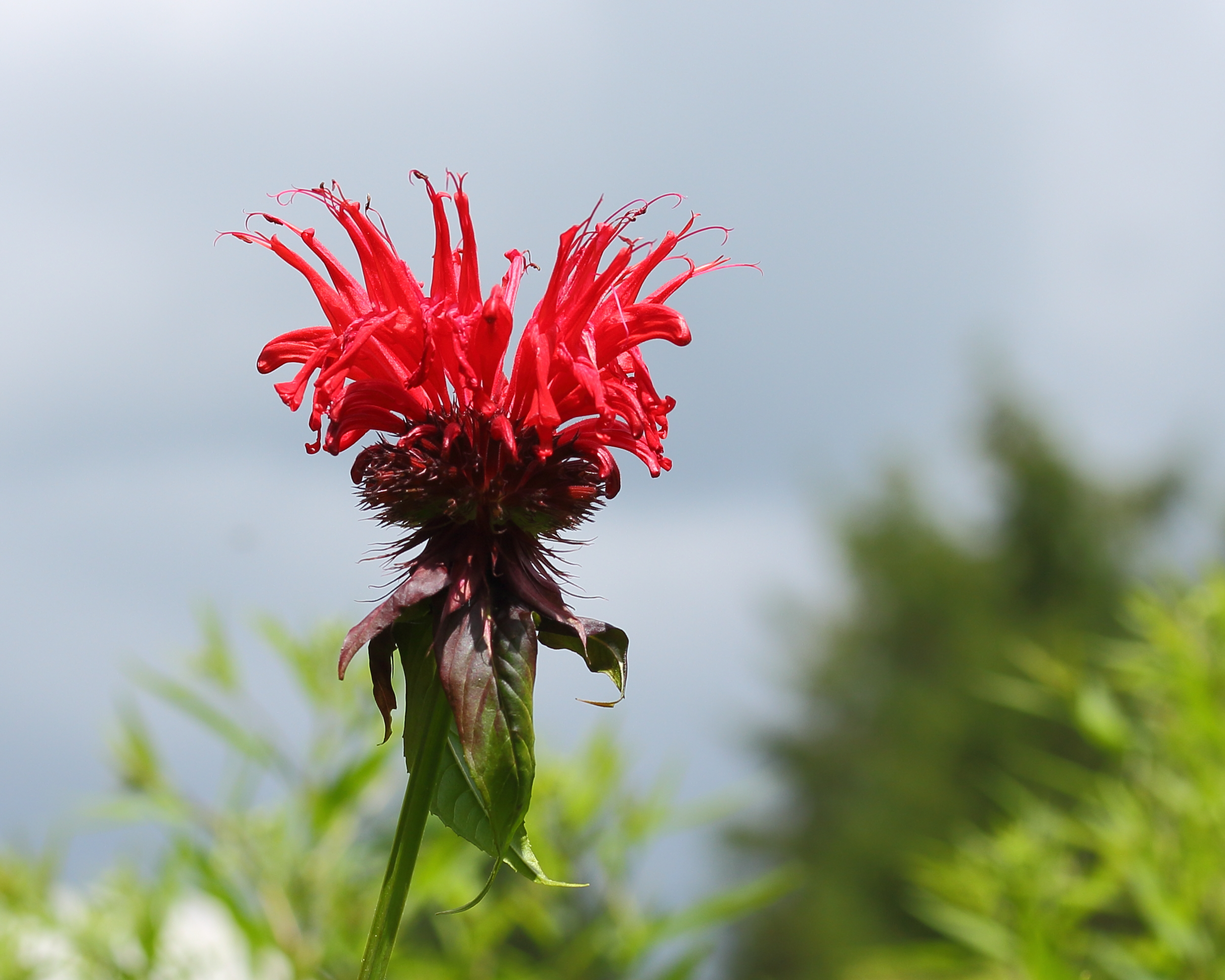
Bee Balm, also known as Bergamot, Horsemint, or Monarda, is a genus of perennial flowering plants native to North America. It belongs to the Lamiaceae (Mint) family.
Bee Balms grow 2-4 feet tall, producing showy flower heads composed of dense whorls of small tubular flowers. Common flower colors include red, pink, purple, and white.
As the name suggests, Bee Balms are excellent at attracting bees, butterflies and hummingbirds with their vibrant blooms and generous nectar production. The aromatic foliage releases a strong mint fragrance when crushed.
Bee Balms perform best in full sun and moist, well-drained soil rich in organic matter. They tolerate partial shade. Divide plants every 2-3 years to prevent overcrowding.
Bee Balms make great cut flowers for fresh or dried arrangements. The leaves can also be used to make herbal teas. Allow some flower heads to remain for seasonal interest and self-seeding.
Bee Balms are relatively low-maintenance, though watch for susceptibility to powdery mildew in humid climates. Rabbits also tend to avoid this deer-resistant plant.
Begonia
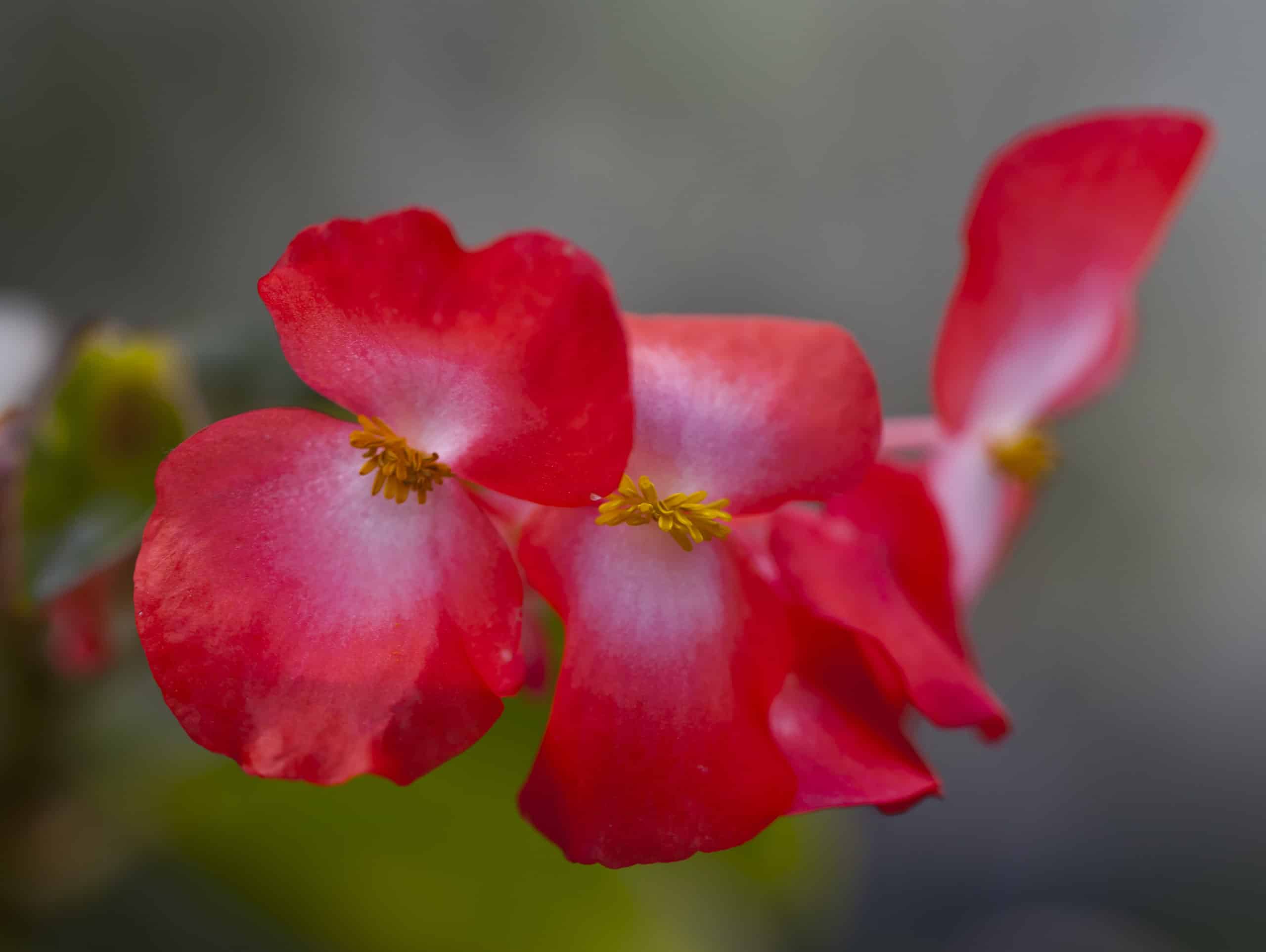
Begonia is a large genus of perennial flowering plants in the Begoniaceae family. With over 1,800 different species, Begonias are among the most popular ornamental plants globally.
Native to tropical and subtropical regions, Begonias are treasured for their colorful flowers, ornamental foliage, and ease of cultivation. The flowers come in shades of white, yellow, orange, pink, red, and bicolor.
Begonia plants exhibit immense variety in size and growth habits from small houseplants to tall bushy varieties up to 6 feet tall. Some have upright cane-like stems while others grow as small mounded, trailing, or cascading plants.
Most Begonia varieties do best in partial to full shade and moist, well-draining soil. Indoors, bright, indirect light mimics their tropical understory needs. Water them thoroughly but avoid overwatering.
Begonias make excellent container plants, bedding plants, and houseplants. Many varieties produce colorful flowers continuously if conditions are right. Spent flowers should be removed to promote additional blooms.
Bellflower
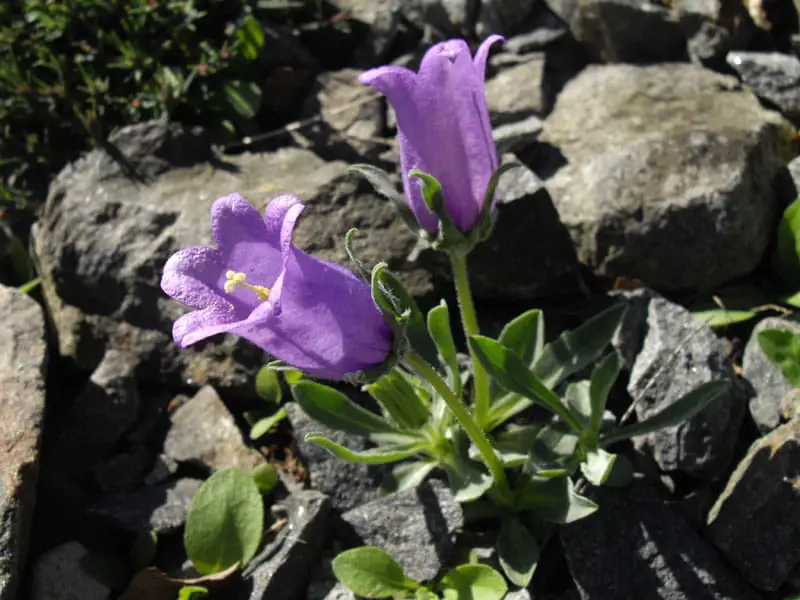
Bellflower is a genus (Campanula) of perennial, biennial, and annual flowering plants in the Campanulaceae (Bellflower) family. It comprises over 500 species native across the temperate regions of the Northern Hemisphere.
Bellflowers are named for their distinctively shaped, bell-like flowers that come in shades of blue, purple, pink, and white. The flowers are borne singly or in clusters atop erect or trailing leafy stems.
Plant size varies greatly from dwarf alpine varieties only inches tall to robust garden plants reaching 2-3 feet tall. They bloom throughout late spring into late summer.
Most Bellflowers prefer full sun to partial shade and moist, well-drained soil enriched with organic matter. Deadhead spent blooms to encourage continued flowering.
Bellflowers attract a wide variety of pollinators like bees and hummingbirds. They make excellent cut flowers and are well-suited for borders, rock gardens, and ground covers.
While generally low-maintenance, Bellflowers may need protection from slugs and snails. Taller varieties benefit from support or staking.
Bergenia
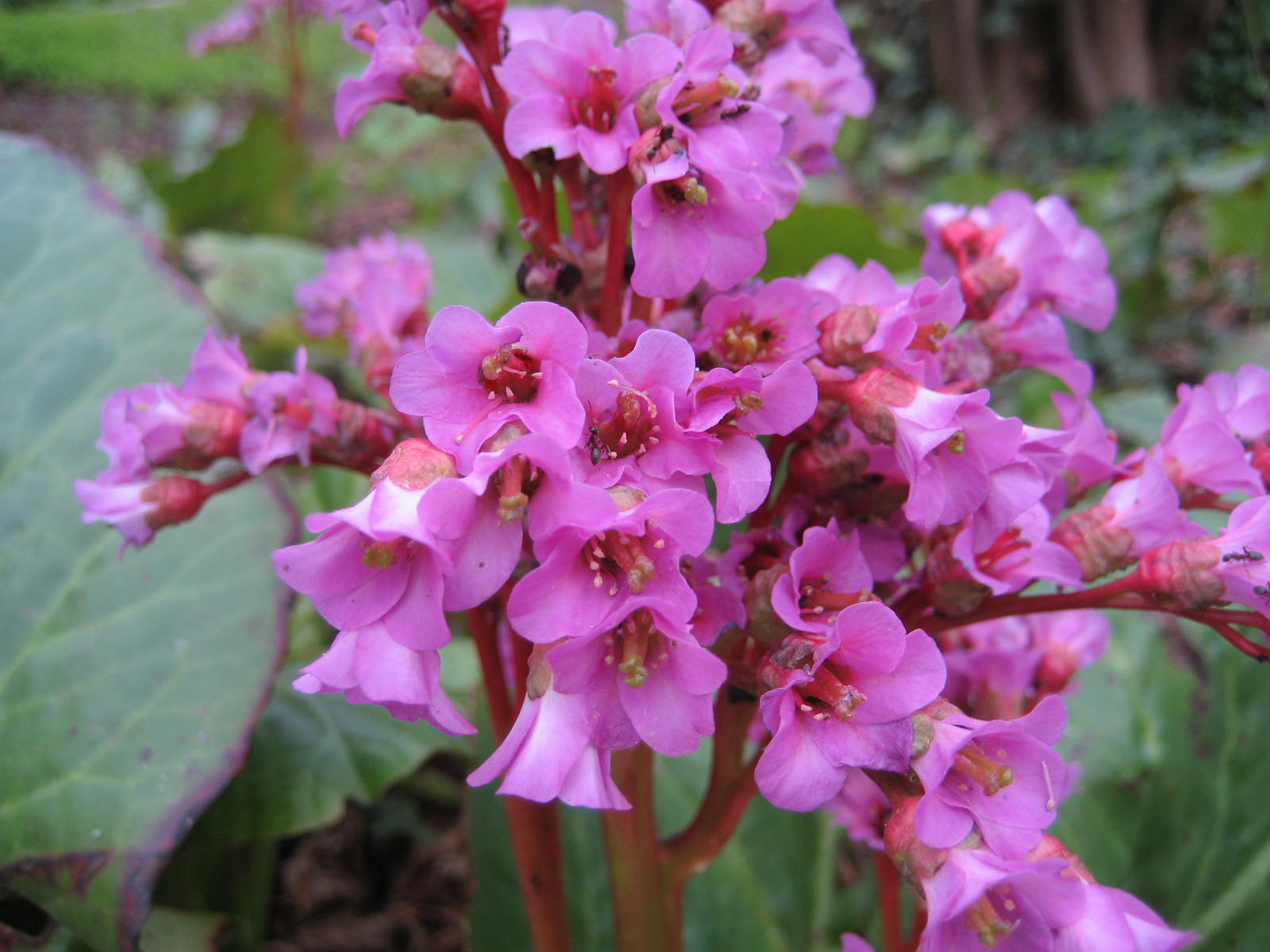
Bergenia is a genus of evergreen perennial flowering plants native to the mountains of central Asia and Europe, but are commonly found as houseplants. They belong to the Saxifragaceae family, which also includes Astilbes and Heucheras.
Bergenia gets its common name “Elephant’s Ears” from the shape and size of its large, thick, rounded, cabbage-like evergreen leaves that can grow 8-16 inches wide. The leathery leaves are a deep green color and provide texture and ground cover in shady areas of the garden where Bergenia thrives without direct sunlight.
In early spring, before the new foliage emerges, Bergenia produces eye-catching clusters of pink, red, or white flowers on thick stems rising 12-18 inches above the low-growing plant. These blooms attract early pollinators like bees and make long-lasting cut flowers for indoor arrangements.
Old flowers should be removed to encourage new blooms and Bergenia prefers moist, nutrient-rich, well-drained soil that stays consistently damp but not saturated. Fertilizing with a balanced time-release plant food twice in early spring and late summer will help meet the plant’s nutrient needs.
An excellent evergreen ground cover, Bergenia spreads slowly by rhizomes to form a dense mat over time. It is easy to grow, low maintenance, and drought tolerant once established, making Bergenia an ideal choice for beginner gardeners.
Black-Eyed Susan (Rudbeckia hirta)
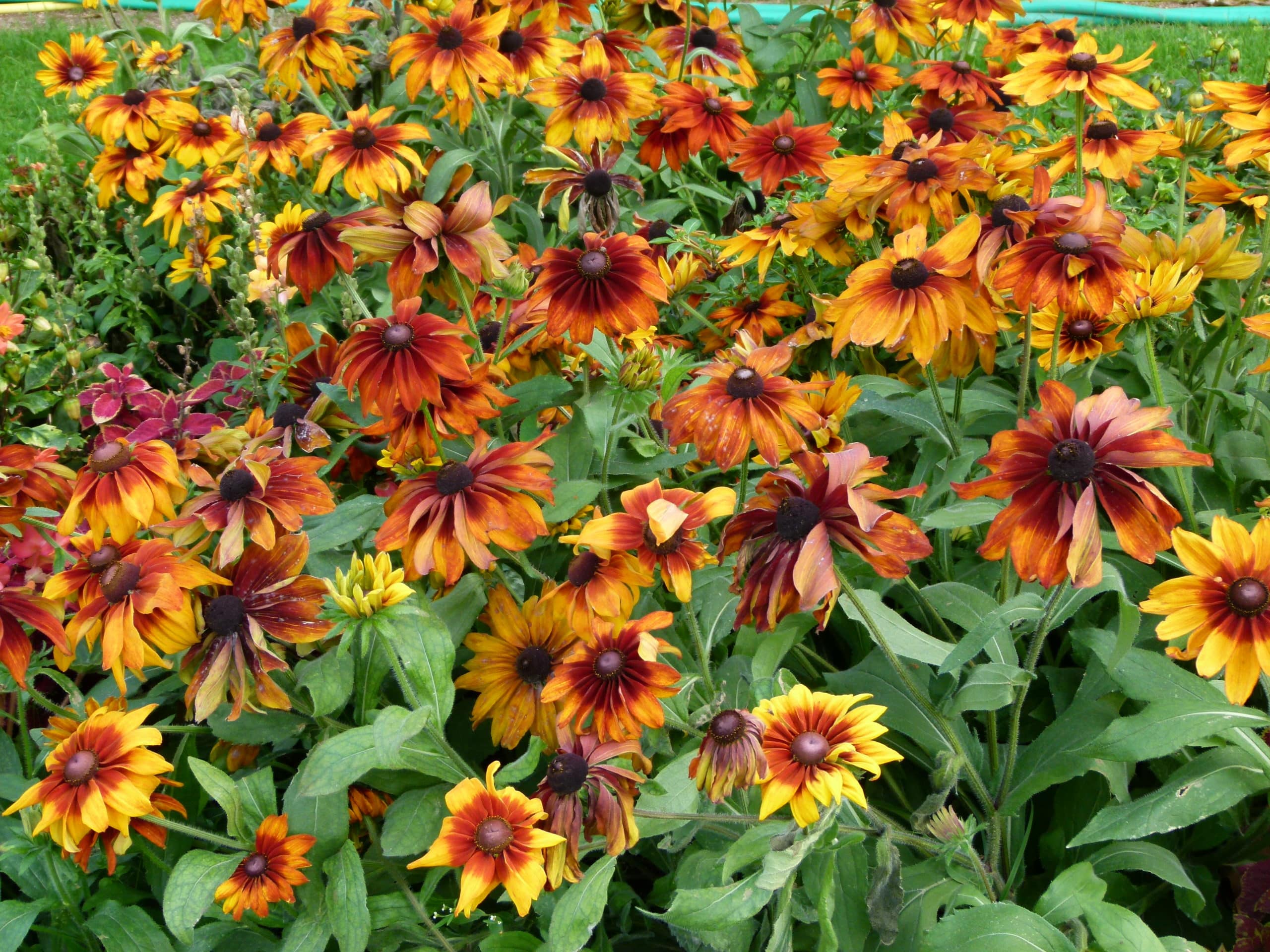
Black-Eyed Susans are cheerful, daisy-like flowers with yellow petals surrounding a dark brown/black center disk. They are members of the sunflower family and are native to North America.
These easy-to-grow flowers thrive in full sun and well-drained soil. They tolerate drought and heat well once established, making them a low-maintenance choice. Black-Eyed Susans are content in average garden soil, but adding compost helps them bloom even more.
Growing 1-3 feet tall, Black-Eyed Susans provide long-lasting color in borders, meadows, and cutting gardens from mid-summer into fall when many other flowers fade. Their sunny blossoms attract bees, butterflies, and other pollinators.
Black-Eyed Susans readily self-seed, so deadheading spent flowers prevents unwanted flowers the following season, but they make great wildflowers when left alone.
In addition to the classic yellow/black variety, cultivars are available in shades of orange, red, and even burgundy around the center cone.
Blanket Flower (Gaillardia)
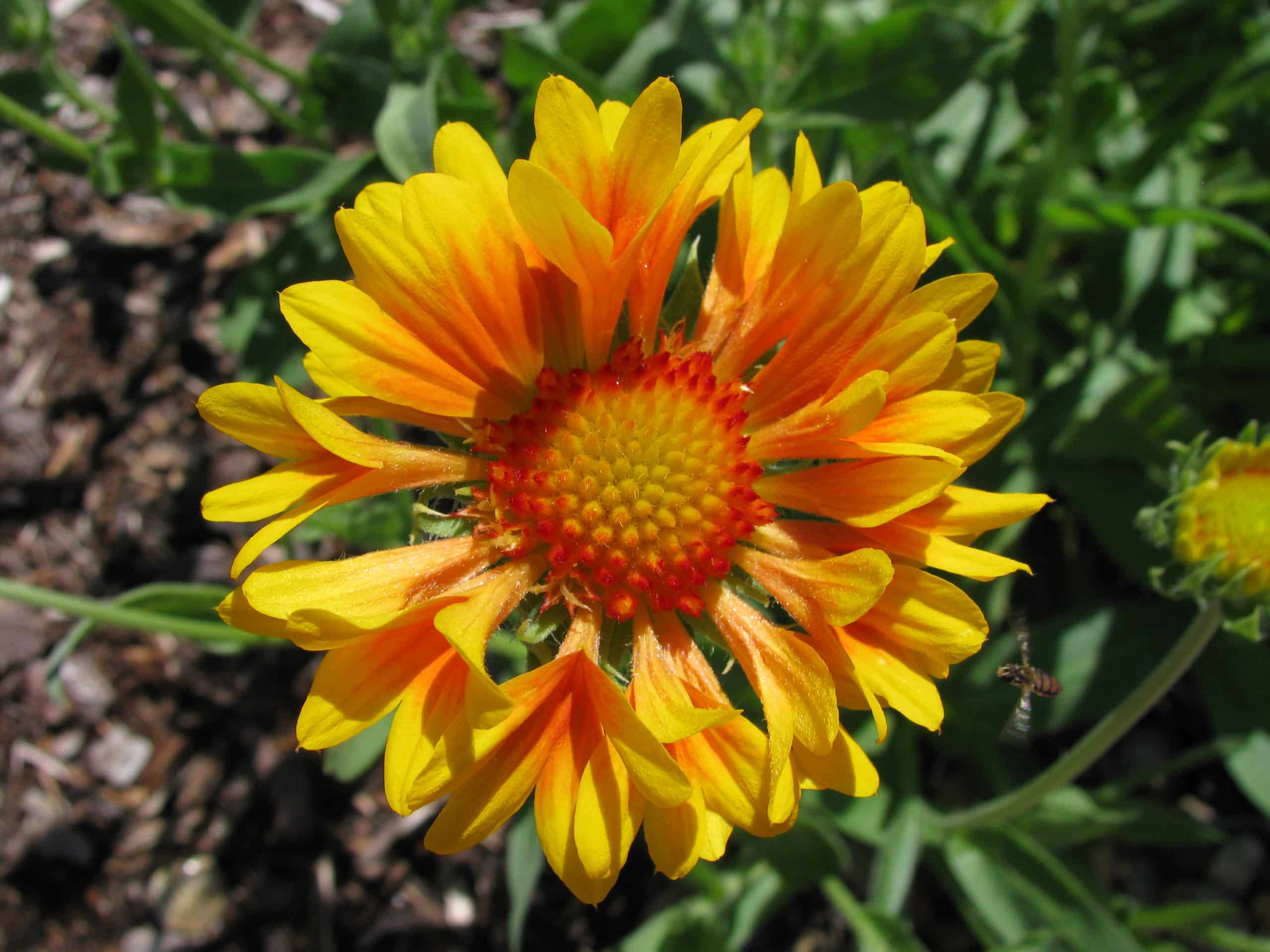
Blanket Flowers, from the genus Gaillardia, are warm-colored flowers with red-tipped petals surrounding a prominent raised disk. Native to the Americas, their common name refers to their ability to create a “blanket” of color when blooming in groups.
These drought-tolerant, heat-loving perennials prefer full sun and well-drained soil. They are very low-maintenance once established, only requiring occasional watering in extreme heat; their hairy, gray-green foliage helps prevent moisture loss.
Blanket Flowers bloom heavily from late spring through fall, with 2-4 inch daisy-like flowers in shades of red, orange, and yellow. Classic varieties display rich red petals edged in yellow around a maroon center disk.
Growing 1-3 feet tall, Blanket Flowers make excellent cut flowers and attract bees, butterflies, and birds with their bright colors and abundant nectar. Deadheading promotes continued blooming, but they also self-seed readily when allowed.
Blanket Flowers are easy to grow from seed and thrive in hot, sunny sites with sharp drainage where many other plants struggle.
Blazing Star (Liatris spicata)
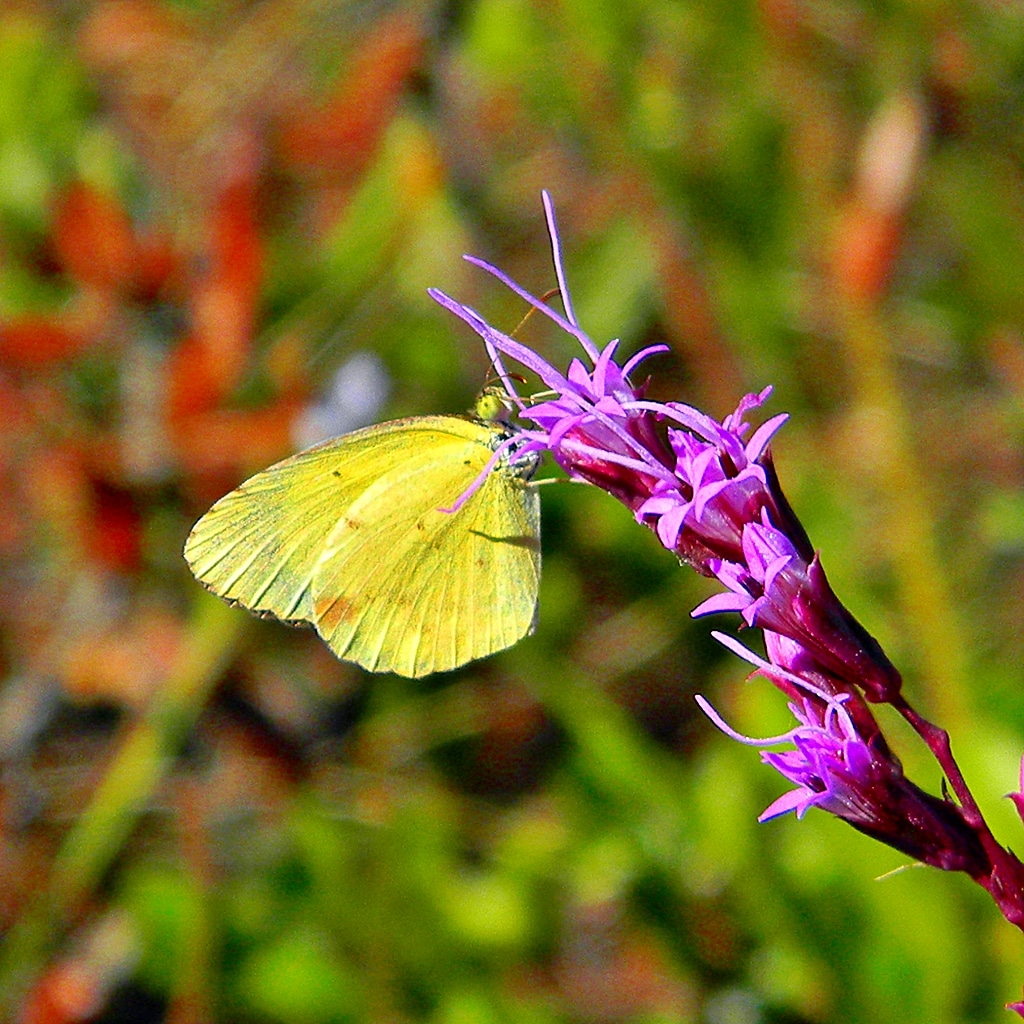
Blazing Star, also called Dense Blazing Star, Gayfeather, or Prairie Blazingstar, is a tall, striking wildflower native to prairies and meadows in eastern and central North America. Its flowering spikes resemble blazing stars, giving it its common name.
This clump-forming perennial grows 2-5 feet tall, producing unmistakable purple flower spikes in summer and fall. The densely packed fuzzy flowers bloom from the top down along the tall stems.
Blazing Star thrives in full sun and moist, well-drained soil, though it has good drought tolerance once established. It can be planted in borders, wildflower meadows, or native plant gardens to attract butterflies, hummingbirds, and other pollinators.
Its bright lavender blooms and vertical form make Blazing Star an excellent cut flower for bouquets and floral arrangements.
While Blazing Star is easy to grow from seed, the plants develop a deep taproot and do not transplant well once established. Good air circulation helps prevent potential issues with powdery mildew.
Bleeding Heart (Dicentra spectabilis)
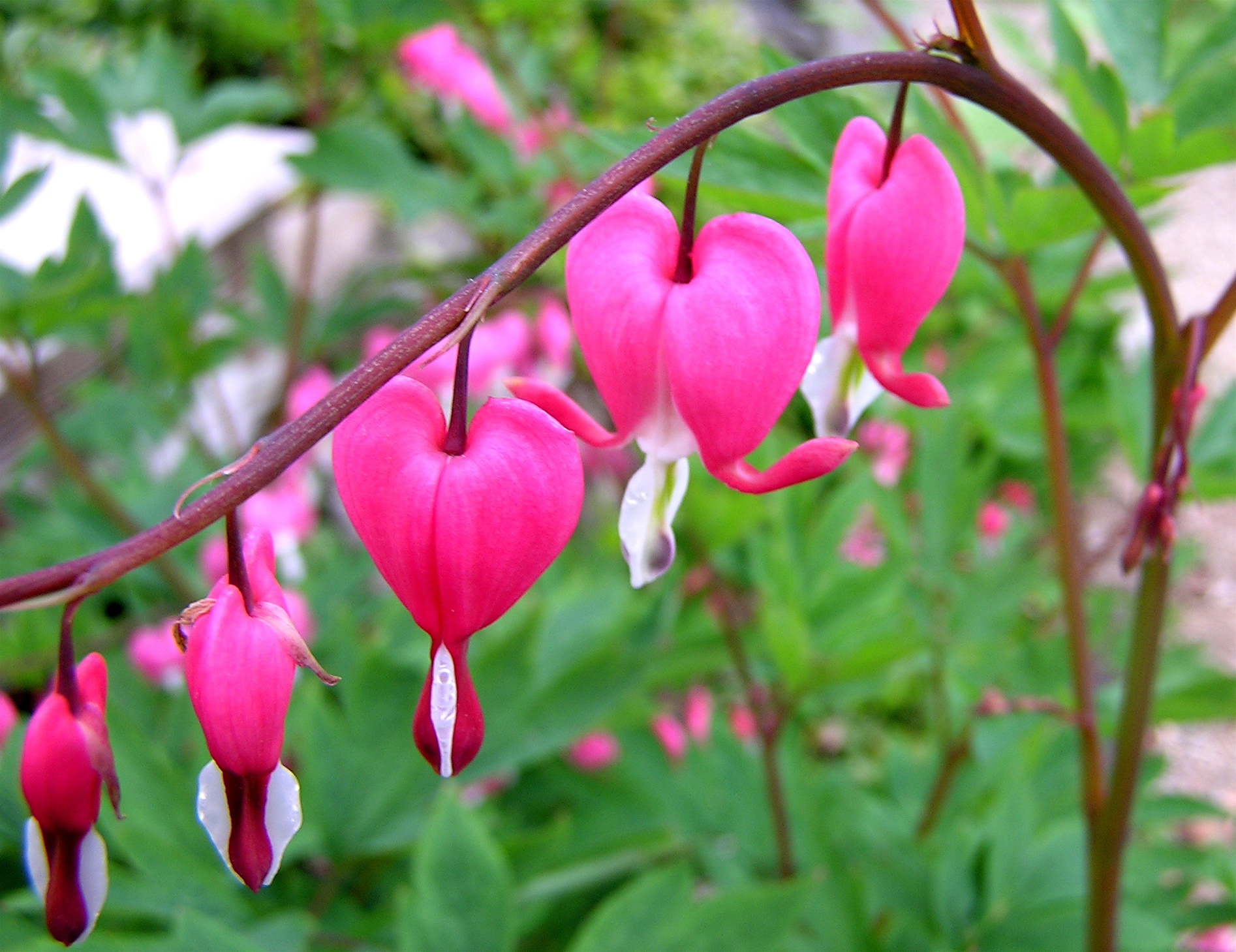
Bleeding Hearts are old-fashioned, romantic flowering plants prized for their dangling heart-shaped blooms. Native to eastern Asia, they get their common name from the distinctive arched stems of pink or white heart-shaped flowers.
As spring bloomers, Bleeding Hearts flower for 4-6 weeks starting in late spring. Their fern-like foliage goes dormant in summer’s heat, so they are often planted among other perennials to camouflage this.
Bleeding Hearts prefer partial to full shade and moist, humus-rich, well-drained soil. They make excellent woodland garden plants or underplantings for trees and shrubs. Too much direct sun can cause foliar wilt.
Once established, the plants spread slowly over time by rhizomes. Bleeding Heart is deer and rabbit-resistant, adding to its appeal. The unique charm of its heart-shaped flowers also makes it excellent for cutting.
While short-lived, Bleeding Hearts readily self-seed if allowed to go to seed before going dormant. This helps them perpetuate in ideal sites. Lifting and dividing the tuberous roots every few years also rejuvenates the plants.
Bluebell (Hyacinthoides non-scripta)
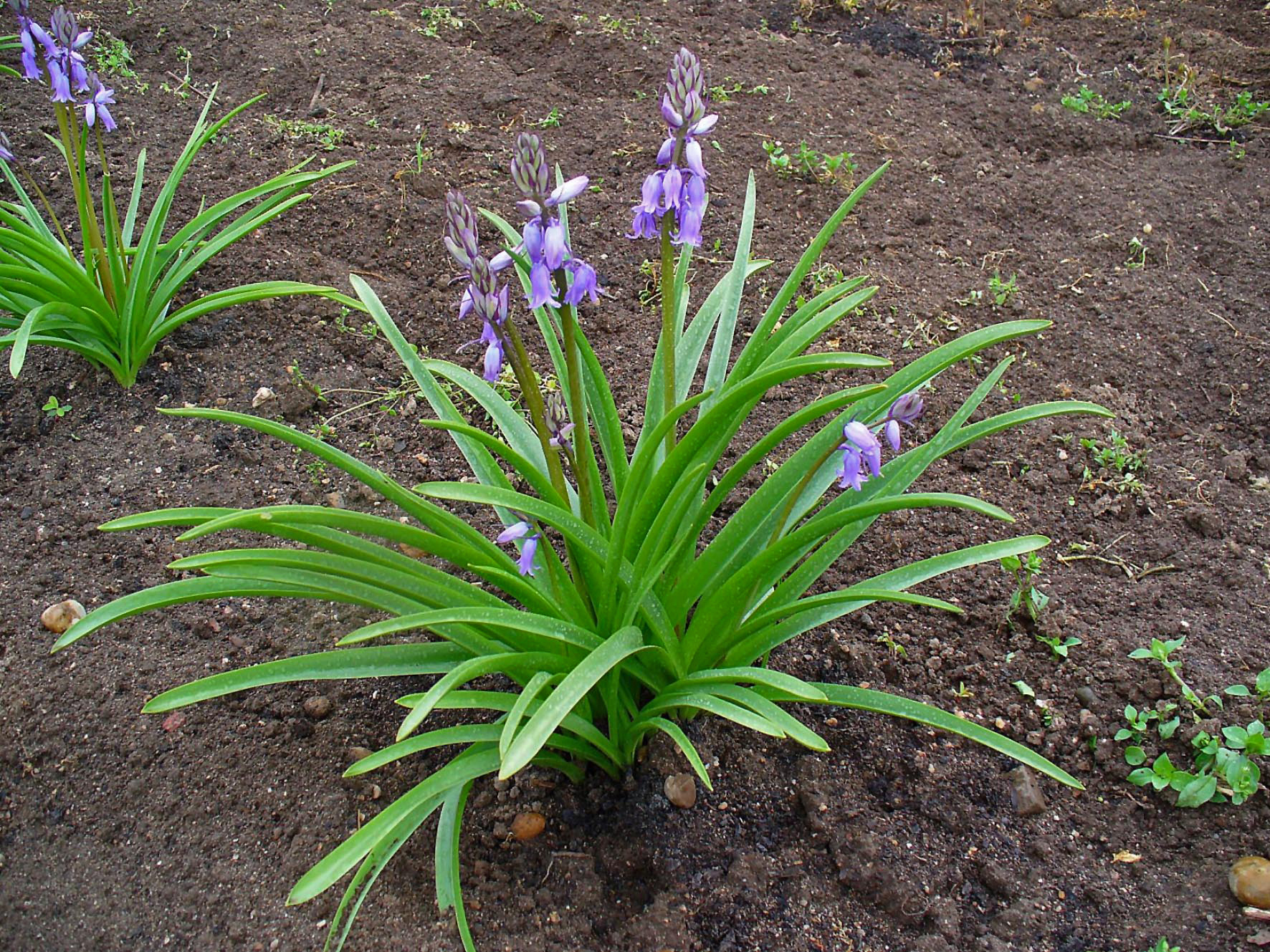
Bluebells are delicate flowers that carpet woodland areas with vibrant violet-blue hues in early spring. Native to Western Europe, these bulb flowers get their name from their blue bell-shaped blooms.
The narrow, drooping bluebell flowers grow on one side of an arching stem that can reach 8-16 inches tall. The strap-like grey-green leaves sprout directly from the base.
Bluebells thrive in shady areas with moist, fertile, well-drained soil rich in humus. Over time, they spread gradually by seed and bulb offshoots to form stunning drifts.
While lovely planted in groups for their distinctive blue tones, bluebells should be contained as they can be invasive in some regions. Planting with early-flowering bulbs like daffodils can help camouflage their dormant foliage later in summer.
Deer-resistant with a light, sweet fragrance, bluebell flowers make excellent cut flowers but have a relatively short vase life. The Bluebell is a protected species in the UK where collecting from the wild is prohibited.
Blue-Eyed Grass (Sisyrinchium)
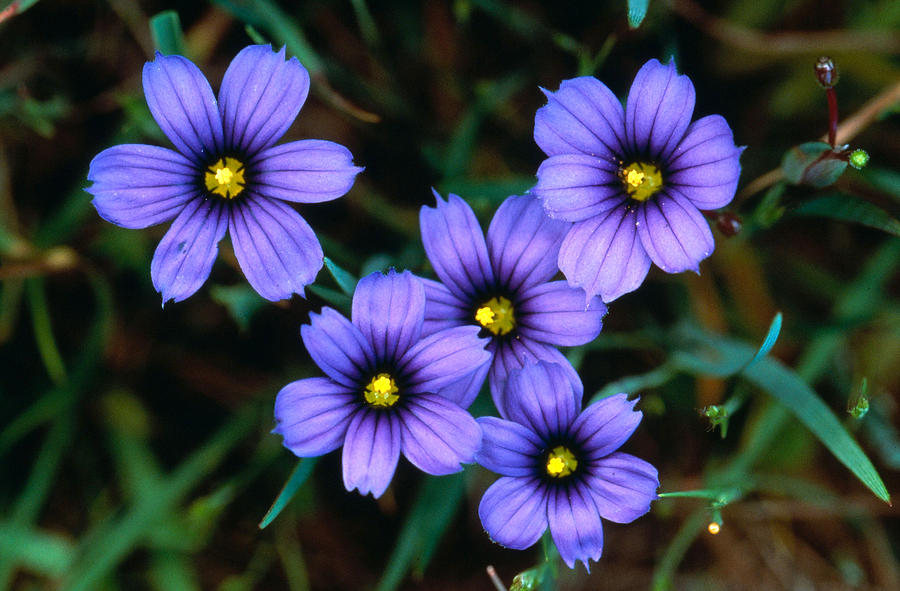
Despite its name, Blue-Eyed Grass is not a grass, but a small wildflower in the iris family. It gets its common name from its slender, grass-like foliage and petite flowers with bright blue eyes surrounded by yellow stamens.
Native to North and South America, these low-growing perennials reach just 6-12 inches tall. They produce an abundance of star-shaped blue, violet, or white flowers from late spring through summer.
Blue-Eyed Grass thrives in full sun and moist, well-drained soil, though it has good drought tolerance once established. It’s an excellent addition to rock gardens and meadows, or used as edging along borders.
Blue-Eyed Grass flowers close at night and on cloudy days, reopening in the morning sun. The plant readily self-sows if not deadheaded, allowing it to form drifts over time.
While relatively carefree, too much moisture can cause rot. Providing good air circulation and dividing clumps every few years helps keep the plants vigorous.
With its delicate flowers and tidy, grass-like foliage, Blue-Eyed Grass makes a lovely miniature groundcover that attracts pollinators to gardens.
Blue Star Flower (Amsonia)
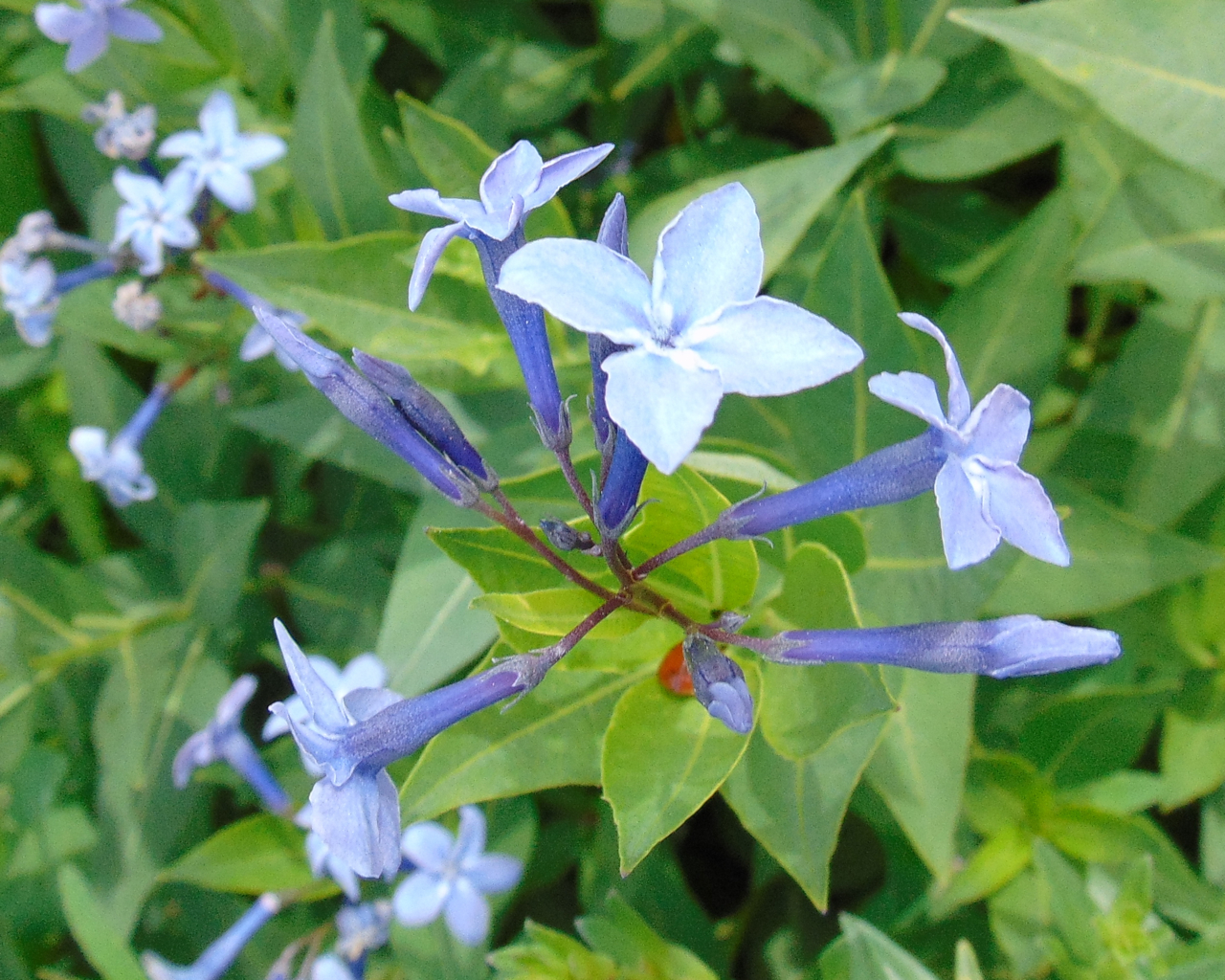
Blue Star Flowers are clump-forming perennials prized for their clusters of small, star-shaped blue flowers that bloom in late spring. Native to the eastern United States, they get their name from the vivid blue shade of their blooms.
Growing 2-3 feet tall, Blue Star Flowers have willow-like green leaves that turn golden yellow in fall before dropping, providing multi-season interest. Their light blue star-shaped flowers form in dense terminal clusters atop unbranched stems.
Blue Star Flowers thrive in full sun to partial shade and moist, well-drained soil. They are drought-tolerant once established and require little maintenance. Their deep root systems help them withstand dry spells.
In addition to their striking blue flowers, Blue Star Flower foliage is deer and rabbit-resistant. The flowers are excellent for cutting and attracting butterflies and other pollinators to gardens.
While relatively long-lived perennials, Blue Star Flowers can be rejuvenated by dividing clumps every 3-4 years in spring or fall. Pruning foliage back by half after blooming encourages bushier growth.
Bouvardia
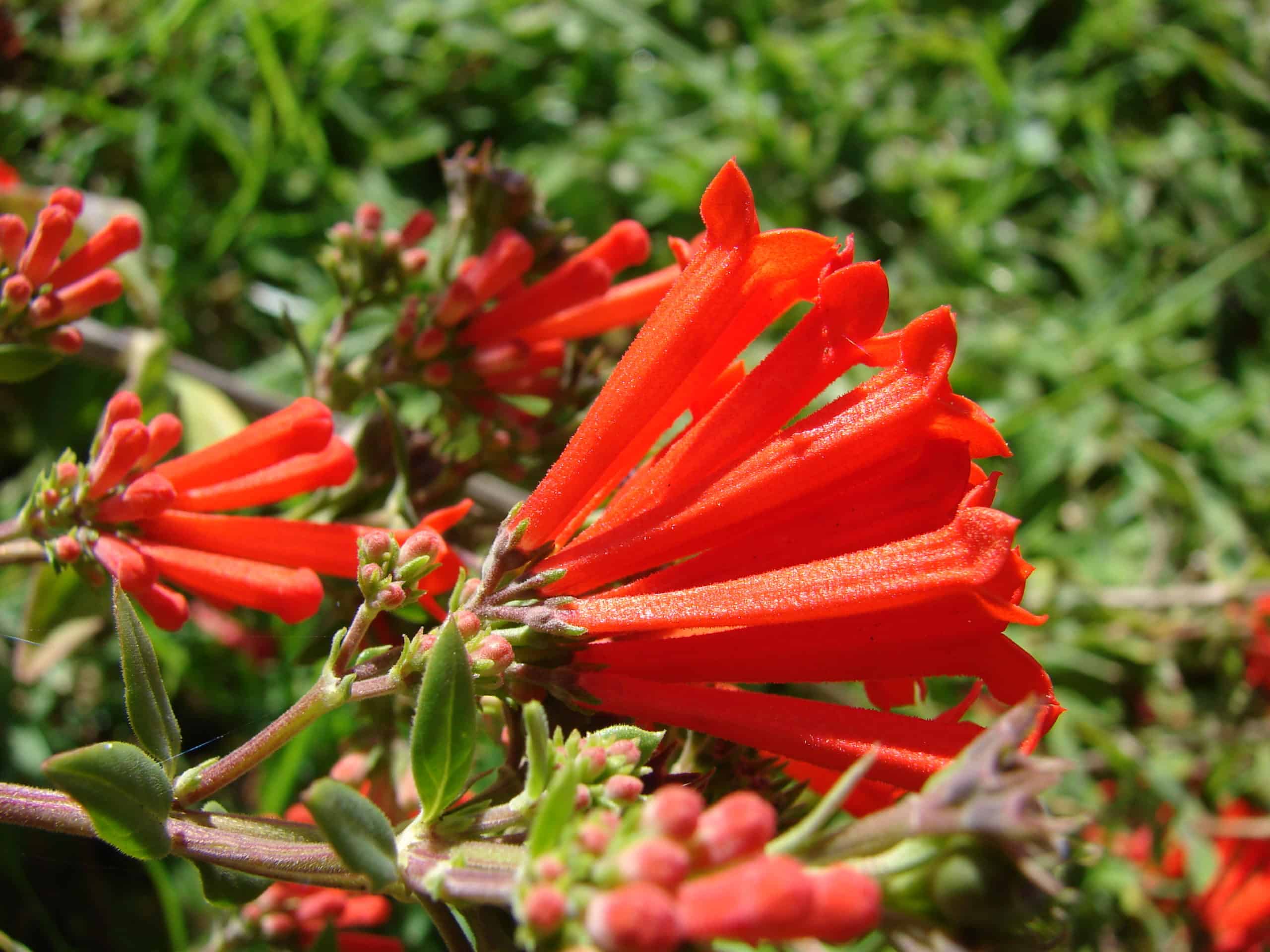
Bouvardia is a genus of flowering plants native to Mexico, Central America, and the southwestern United States. They produce clusters of small, tubular flowers in shades of white, red, yellow, or orange that are very fragrant.
Typically grown as annuals in most climates, Bouvardias can reach up to 3 feet tall with a bushy, upright habit. Their bright blooms and sweet perfume make them popular as cut flowers and for growing in containers.
Bouvardia prefers full sun to partial shade and well-draining soil. Consistent moisture is important, as they are prone to wilting and dropping flowers if allowed to dry out completely. Pinching back tips promotes bushier growth.
While generally low-maintenance once established, Bouvardias are tender perennials that cannot tolerate frost. In warm climates, they may be grown as evergreen shrubs or houseplants.
Their abundant flowering from spring through fall coupled with their strong, sweet fragrance makes Bouvardias excellent for attracting hummingbirds and butterflies to gardens. They also make long-lasting cut flowers for arrangements.
Buddleja (Butterfly Bush)
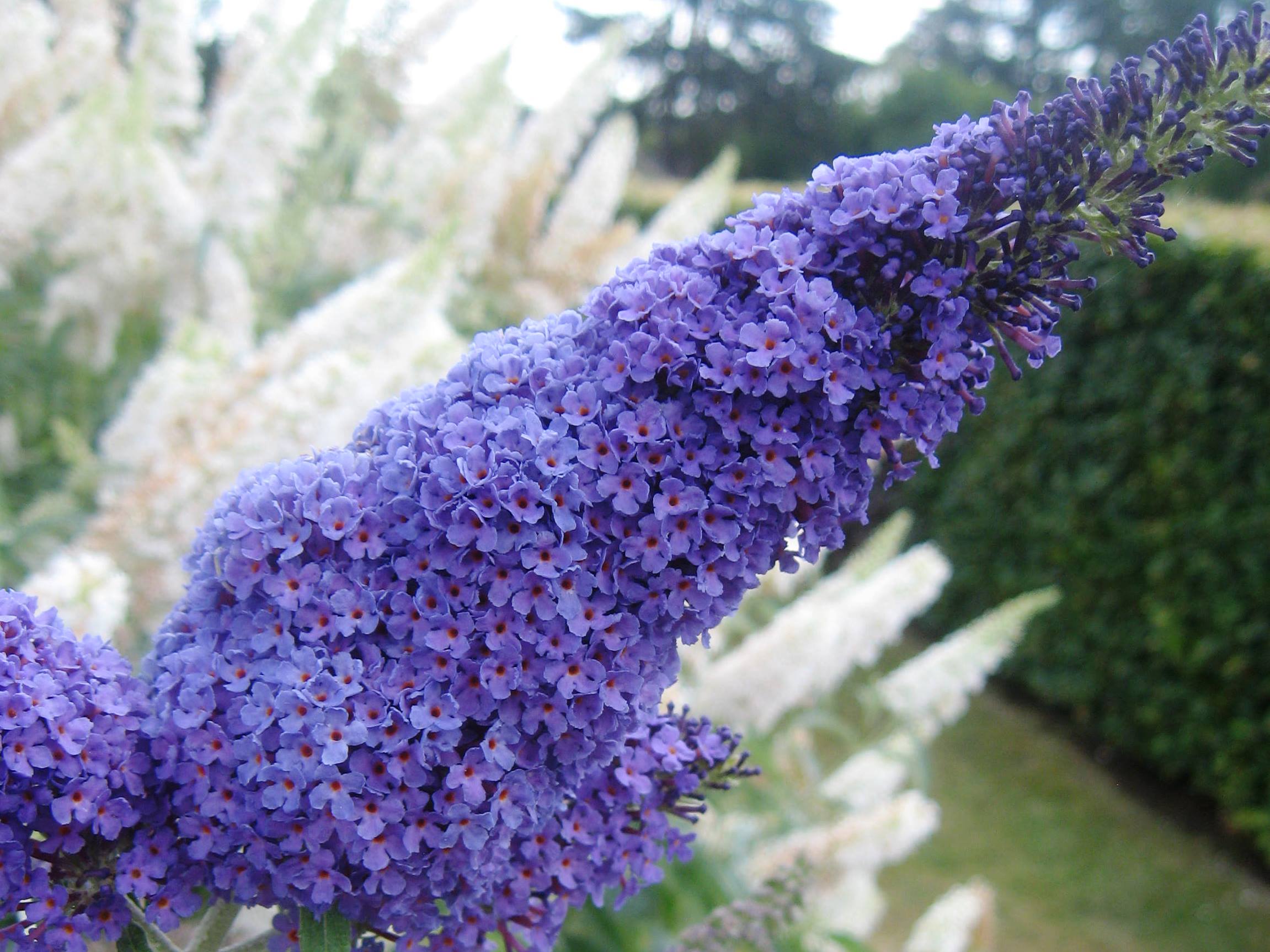
Buddleja, commonly called Butterfly Bush, is a deciduous flowering shrub renowned for attracting butterflies, hummingbirds, and other pollinators to gardens. Native to Asia and the Americas, it produces dense cone-shaped panicles of tiny fragrant flowers.
Butterfly Bushes bloom with vibrant purple, pink, white, yellow, or bi-colored flower spikes from late spring through fall. The flowers give off a sweet honey-like perfume that draws in butterflies from everywhere.
These shrubs rapidly grow to 5-10 feet tall and wide, though there are also new compact cultivars. Buddleja thrives in full sun and well-drained soil, showing good drought tolerance once established. Too much water can lead to rot.
While low-maintenance, pruning Butterfly Bushes annually helps promote rebloom and maintains the desired shape and size. They can be temperamental about transplanting, so Butterfly Bushes should be sited carefully.
Cold hardiness varies among species, with some treated as perennials in warm climates but annuals in cold areas.
Bush Morning Glory (Ipomoea leptophylla)
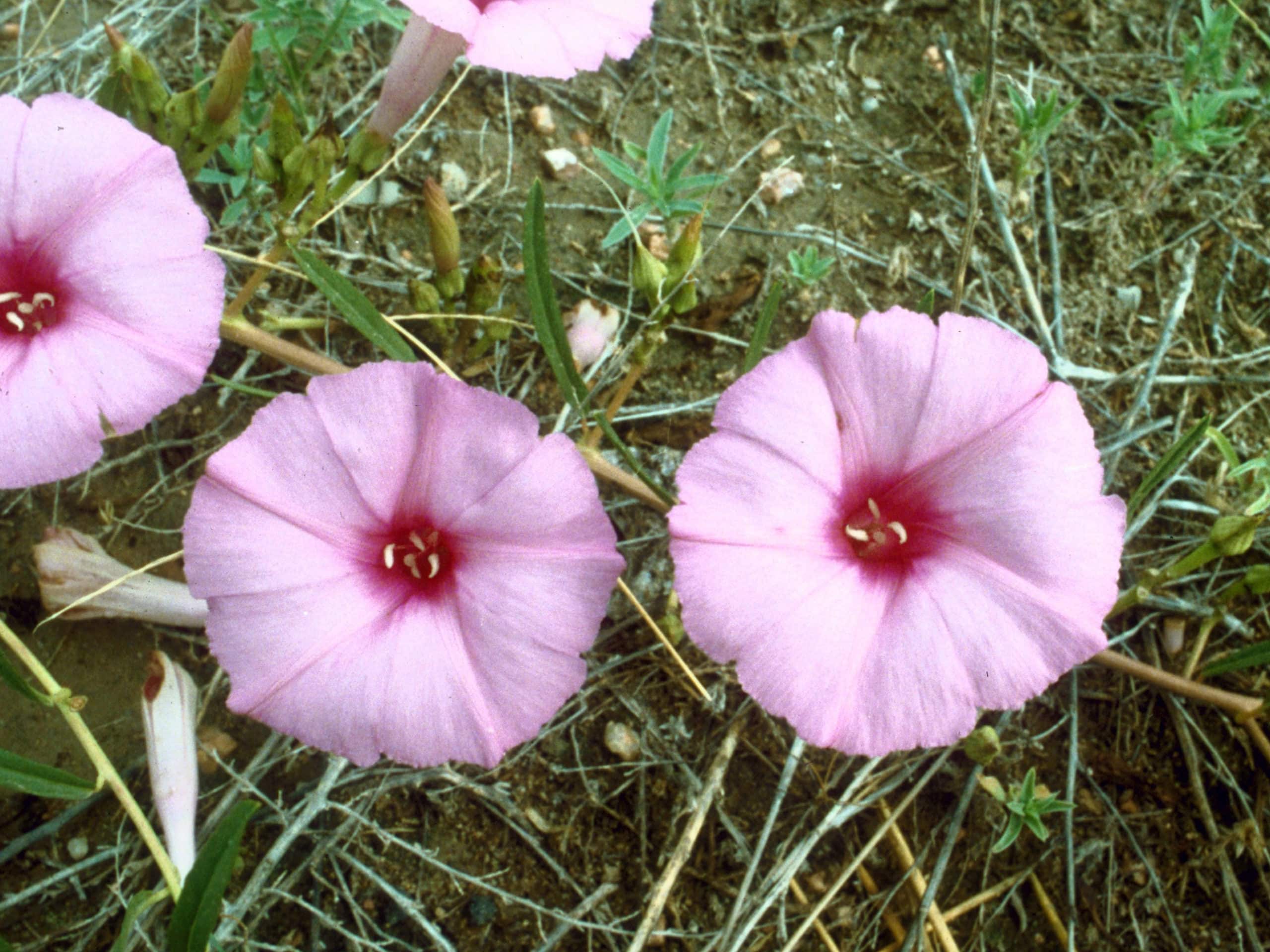
The Bush Morning Glory is a drought-tolerant perennial flowering shrub native to the southwestern United States and Mexico. Unlike its vining cousins, it has an upright, bushy habit well-suited for arid landscapes.
Growing 2-4 feet tall and wide, Bush Morning Glory flowers are bright trumpet-shaped flowers in shades of pink, purple, red, or white and blossom from spring through fall. The flowers are day-blooming like their vining relatives.
Bush Morning Glories thrive in full sun and well-drained soils, showing excellent heat and drought tolerance once established; too much water can lead to rot. Their hairy, grayish-green foliage helps prevent moisture loss.
Requiring little maintenance, Bush Morning Glories need only occasional watering and pruning to maintain their compact shape. They make excellent xeriscape plants and attract hummingbirds and butterflies with their bright, fragrant blooms.
Hardy to 20°F, these sub-shrubs can be pruned to the ground in cold winters and will regrow from the base when warm weather returns. Their deep taproots make them difficult to transplant once established.
Buttercup (Ranunculus)
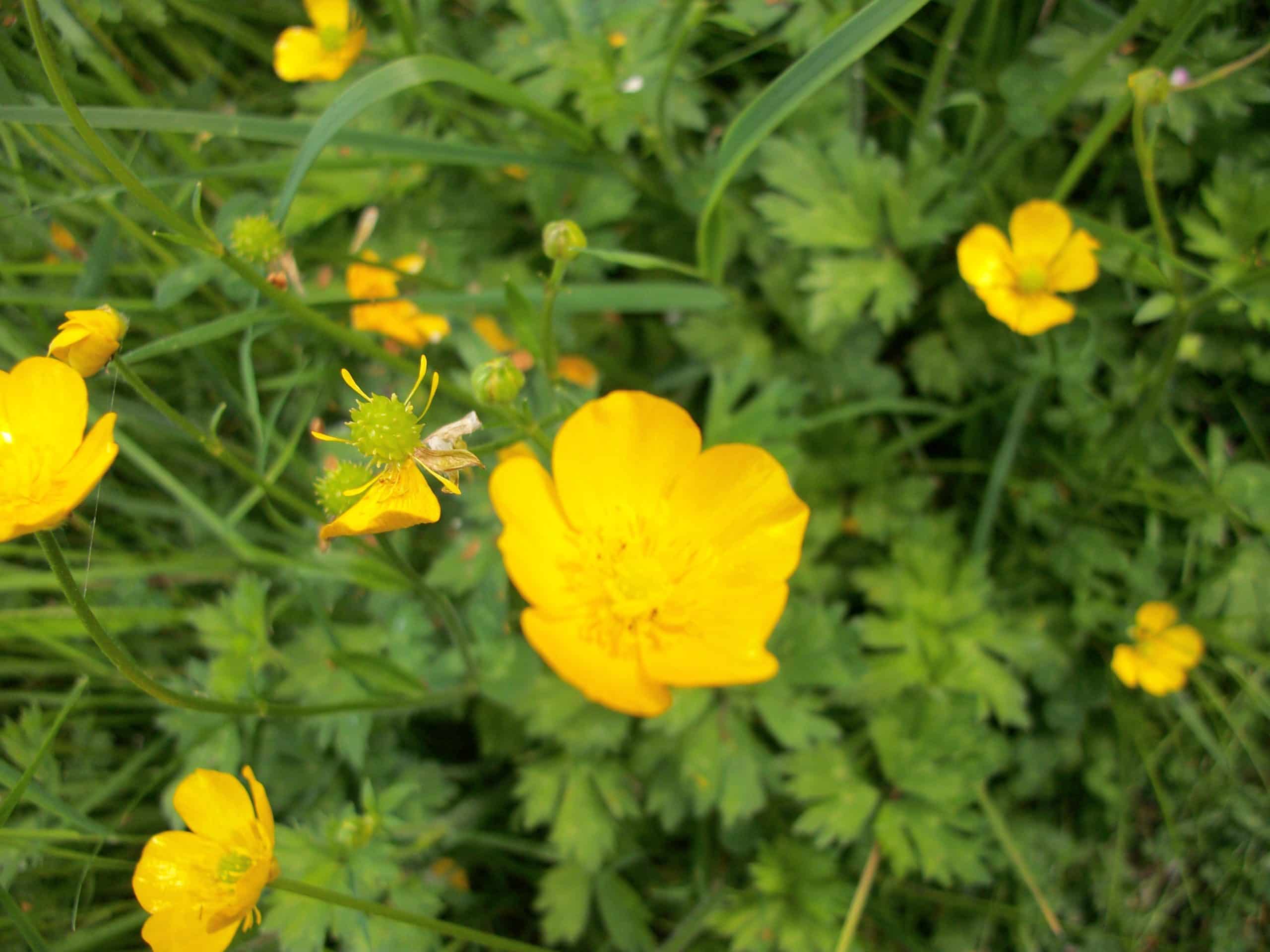
Buttercups are cheerful, low-growing flowers with bright yellow cupped blooms. The name “Ranunculus” comes from the Latin word for “little frog”, referring to how many species thrive in moist, boggy areas.
There are over 600 species of buttercups, both annuals and perennials, found throughout most of the world. They range from weedy wildflowers to cultivated ornamental varieties prized by gardeners.
Most buttercups feature glossy yellow or white flowers with a cluster of pistils and stamens at the center. The simple, ballet-skirted blooms grow on stems above a rosette of lobed or divided leaves.
While some species can be invasive, buttercups are generally easy to grow in moist, well-drained soils and full to partial sun. The plants spread by rhizomes and self-seeding. Taller varieties benefit from staking.
Buttercups are toxic if ingested, so should be planted away from areas where children or pets play. However, their early bloom time provides color when other flowers are scarce.
Many hybrids like ‘Bloomingdale’ have been developed with doubled flowers for use as long-lasting cut flowers. These “Persian buttercups” come in various shades beyond traditional yellows.
